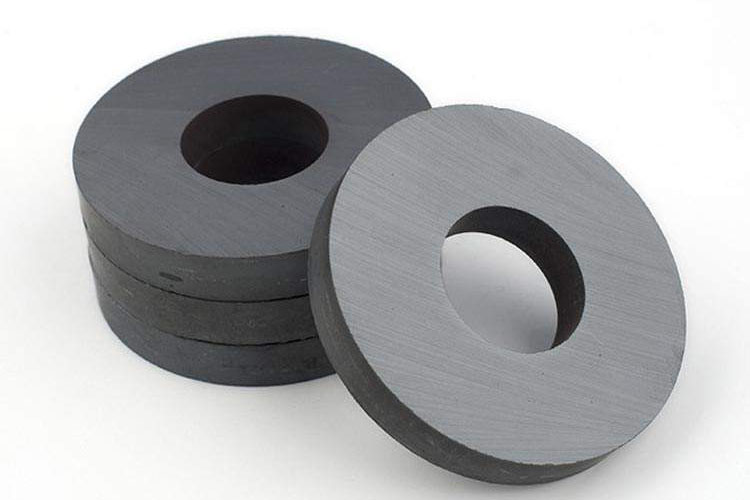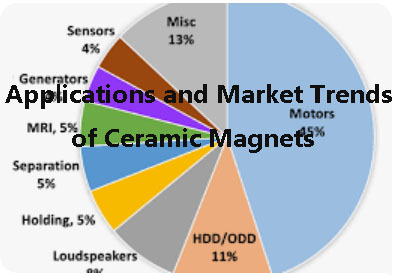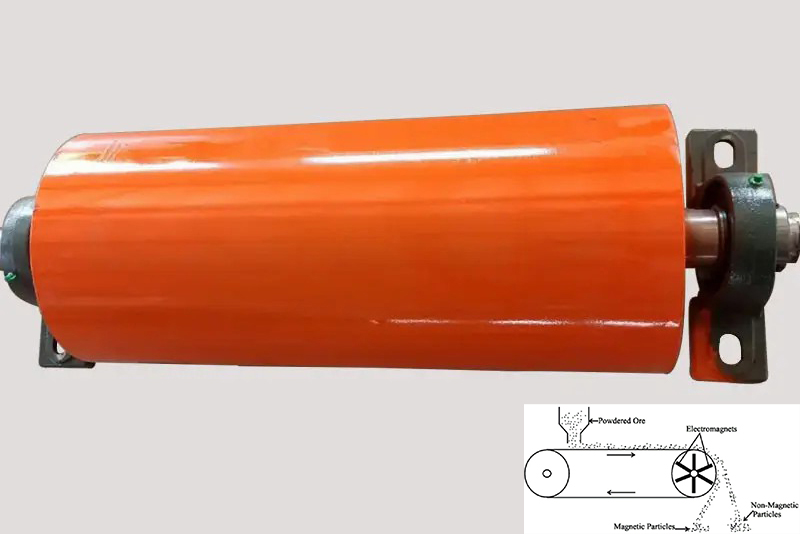Why Ferrite Magnets Are Still Essential in Modern Electronics
In this era of high-performance electronics, neodymium and samarium-cobalt magnets get most of the credit for their exceptional strength. Yet behind the scenes, ferrite magnets remain the dependable workhorses that drive most everyday devices. Ceramic magnets, which consist of iron oxide with barium or strontium, achieve a rare equilibrium between performance, reliability, and cost-effectiveness. Introduced over a half-century ago, ferrite magnets are still essential in audio systems, power electronics, and automotive applications.

1. What Are Ferrite Magnets
Ferrite magnets, also known as ceramic magnets, are produced by the sintering of an iron oxide (Fe₂O₃) mixture with either barium carbonate (BaCO₃) or strontium carbonate (SrCO₃) at temperatures around 1,200–1,300°C. This yields a hard, brittle, and chemically inert ceramic material with high magnetic properties.
There are two principal forms:
• Soft ferrites, which are used in electromagnetic cores and inductors, and
• Hard ferrites, which are used in permanent magnet applications.
The two most common hard ferrites, barium ferrite (BaFe₁₂O₁₉) and strontium ferrite (SrFe₁₂O₁₉), have a hexagonal crystal structure that produces high coercivity (resistance to demagnetization) and magnetic stability, even after thermal or vibration stress.
2. Why Ferrite Magnets Still Matter
a. Cost-Effectiveness and Raw Material Availability
Ferrite magnets are built from plentiful, low-cost materials. In contrast to neodymium magnets, founded on Chinese-mined rare earths, ferrites are founded on iron and barium or strontium—widely available everywhere in the globe. This gives them a significant economic and geopolitics edge.
For instance, a ferrite disc magnet 50 mm diameter can be 5–10 times less expensive than the same neodymium magnet, so ferrites are chosen as material for mass-market consumer appliances like car speakers, fans, and domestic appliances.
b. Excellent Thermal and Chemical Stability
Ferrites perform reliably at elevated temperatures. Some of them retain their magnetization to 250–300°C, whereas most neodymium magnets demagnetize to only 150°C. This resistance to heat is critical in applications like engine compartments, power converters, or industrial machinery.
Being ceramics, ferrites are naturally corrosion-proof and don't require any protective finish—a plus in wet or chemically aggressive environments where metal magnets would rust.
c. Electrical Insulation and Frequency Efficiency
Ferrites are electrical insulators, and thus they prevent eddy current losses in high-frequency applications. This renders them extremely useful in switch-mode power supplies (SMPS), inductors, and transformers—crucial elements in laptops, chargers, and LED drivers. For example, an average smartphone charger contains several ferrite cores that control current flow and reduce electromagnetic noise.
d. Long-Term Magnetic Stability
Ferrite magnets are permanent for decades. Their high coercivity (typically >200 kA/m) avoids demagnetization by shocks, opposing fields, or changing temperatures. That is the reason why car speakers and electric motors using ferrite magnets function well even after 10–15 years for millions of them. For more ferrite magnets, please check Stanford Magnets.
3. Applications in Contemporary Electronics
a. Loudspeakers and Headphones
Ferrite magnets remain the material of choice for automotive and home audio systems. In speakers for automobiles, for example, a ferrite magnet creates the magnetic field that interacts with the voice coil to generate sound. While neodymium magnets enable thinner speakers, ferrites ensure consistent performance in heat and vibration—critical within the high temperatures of automobile interiors of more than 60°C.
b. Power Supplies and Transformers
In switch-mode power supplies (SMPS), ferrite cores improve energy efficiency by minimizing core losses at high frequencies (20–200 kHz). A single 100 W laptop adapter has 4–6 ferrite cores that facilitate effective power transformation and EMI suppression.
c. Electric Motors and Generators
Ferrite magnets are used in stepper motors, alternators, and DC motors—especially in economy products like washing machines, wiper systems, or fans. A 12 V automobile fan motor utilizes ferrite magnets to generate consistent torque when operating securely near engine heat.
d. Sensors and Magnetic Devices
Hall-effect sensors, speed sensors, and encoders depend on ferrite magnets to supply stable magnetic fields. They are corrosion-resistant with stable magnetization properties and hence perfectly suited for application in automotive braking systems, throttle controls, and industrial feedback systems.
e. EMI Suppression and Communication Devices
Ferrite cores and beads—tiny cylindrical devices clamped on data and power cables—are essential in reducing electromagnetic interference (EMI). Nearly all laptop adapters and HDMI cables contain ferrite filters to maintain the signal clean and comply with EMC regulations.
4. Environmental and Supply Chain Benefits
Ferrite magnets have a low environmental burden. Their manufacturing processes utilize non-toxic, recyclable feedstocks and low chemical waste compared to the production of rare-earth magnets, which generates acid effluents.
As industries turn to supply chain diversification, ferrites offer a stable alternative free from price instability and export restrictions of rare earths. Producers of hundreds of millions of electric fans, pumps, and audio devices rely on ferrite magnets for such a long-term material guarantee.
5. Keeping Pace with Technology
Current research focuses on nano-structured ferrites and composite materials in order to enhance magnetic density and strength. Thus, optimized grain boundary strontium ferrite nanoparticles have achieved energy products of nearly 6 MGOe, narrowing the gap with low-end rare-earth magnets.
Hybrid magnetic systems—ferrite and neodymium—are under investigation for electric vehicle motors with a performance-sustainability balance.
Conclusion
Ferrite magnets lack the power of the rare earths, but they possess something equally valuable: dependability, durability, and independence. From the speakers on your car to the power wiring in your notebook computer, ferrite magnets deliver consistent performance at a fraction of the cost.
Their compatibility of chemical stability, electrical insulation, and thermal resistance has made them the backbone of modern electronics. In a progressively sustainable-based world with issues relating to material security, ferrite magnets show that the best technologies aren't always the most dazzling—but the best overall.















